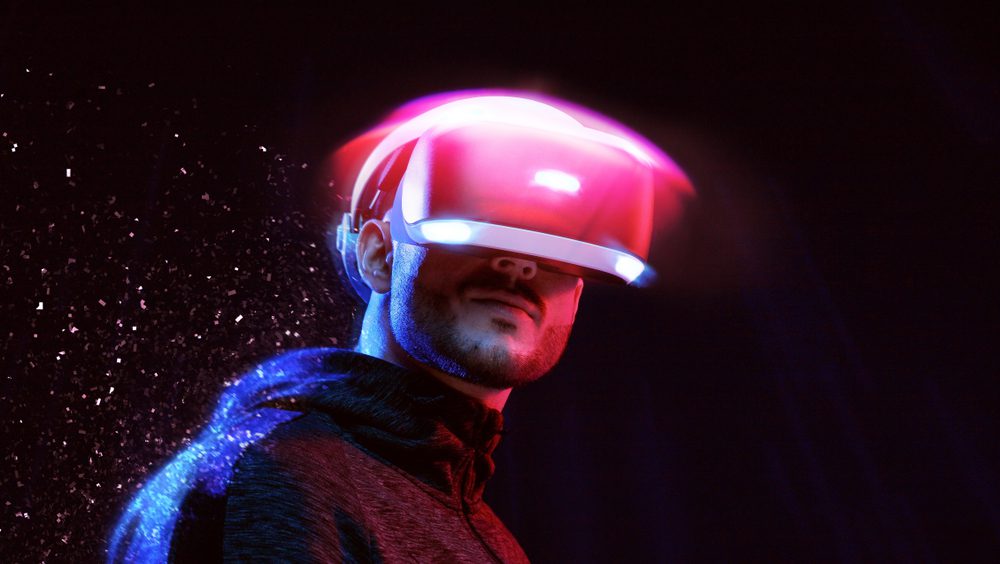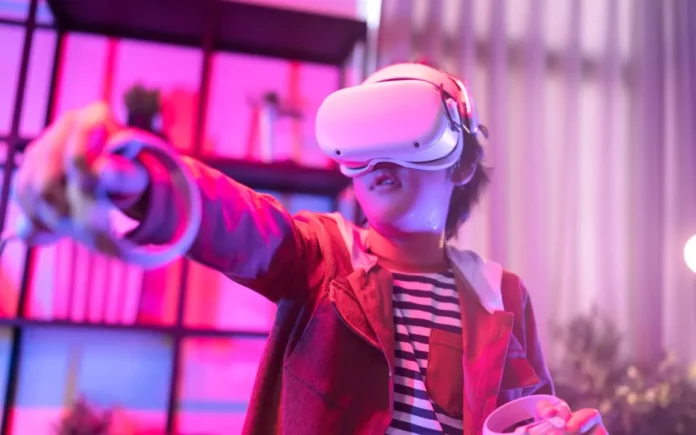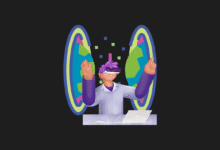
Is the Metaverse Over?
This paper examines the fundamental components of the Metaverse by analyzing scientific data, technological developments, and economic projections. The discussion is rooted in empirical research on VR (Virtual Reality) and AR (Augmented Reality) technologies, Latency issues, Artificial Intelligence (AI) applications, and the evolving Economic Potential of these digital ecosystems. The analysis supports the view that the Metaverse is not obsolete but remains an evolving domain with significant future prospects.
1. Introduction

The rapid progress of digital technologies has catalyzed the emergence of the Metaverse—a hybrid space blending physical and virtual realities. Advanced VR and AR systems allow seamless transitions between real-world and digital experiences, challenging traditional models of human–computer interaction. This paper investigates whether the Metaverse has reached its end or if it is still in a phase of active evolution. Our review is grounded in scientific literature, technical performance metrics, and market trends that collectively suggest that the Metaverse is far from complete.
2. Technological and Scientific Foundations

2.1. VR/AR Technologies and Hardware Advancements
Recent innovations in VR and AR hardware are critical to the Metaverse’s development. The latest VR headsets feature:
- Display Resolution and Field of View: High pixel density and wide fields of view ensure immersive and detailed digital experiences. Empirical studies indicate that refresh rates of 90 Hz or higher are essential for a realistic experience.
- Latency: Maintaining latency below 20 milliseconds is crucial to avoid motion sickness and ensure accurate motion tracking. Ongoing research in processing power and optimized data algorithms is central to achieving these metrics.
2.2. Artificial Intelligence (AI) and Real-Time Processing
The role of AI in the Metaverse extends from real-time personalization of digital environments to sophisticated data-driven modeling of user interactions. Cutting-edge machine learning algorithms analyze behavioral patterns and adapt virtual spaces accordingly. Moreover, experimental data from human–computer interaction studies—including measurements using EEG and fMRI—reveal that neurological responses in virtual environments are similar to those experienced in the real world, providing a scientific basis for the immersion strategies employed in the Metaverse.
3. Economic and Social Dynamics

3.1. Market Trends and Investment Data
The economic potential of AR/VR technologies is underscored by robust investment trends. Analyses forecast that the market, valued at several billion dollars in the early 2020s, could reach hundreds of billions by 2030. Major technology firms and institutional investors are channeling significant capital into Metaverse-related ventures despite short-term volatility, recognizing the long-term Economic Potential of integrated digital ecosystems.
3.2. Social Interaction and User Experience Research
Behavioral studies indicate that immersive digital environments trigger cognitive and emotional responses that are analogous to in-person interactions. Research into User Experience has shown that carefully designed virtual spaces can enhance social connectivity and engagement. The integration of VR and AR within educational, professional, and recreational contexts points to a future where the Metaverse will play a critical role in redefining communication and social collaboration.
4. Technical and Ethical Challenges

4.1. Technical Limitations
Several technical challenges remain in the realization of a fully integrated Metaverse:
- Hardware Compatibility: Current devices sometimes fall short of meeting the stringent performance requirements necessary for a truly immersive experience.
- Data Processing and Security: The management of large-scale, real-time data streams and the safeguarding of user information continue to be pivotal research areas.
4.2. Ethical and Regulatory Considerations
Emerging issues concerning data privacy, digital identity, and intellectual property necessitate proactive ethical and regulatory frameworks. As the Metaverse evolves, establishing clear guidelines to protect user rights while fostering innovation is paramount.
5. Future Perspectives and Conclusion

Scientific research and continuous technological advancements strongly suggest that the Metaverse is not a defunct concept; rather, it is a dynamic and emerging field. Improvements in VR/AR hardware, coupled with breakthroughs in Artificial Intelligence (AI) and User Experience design, are paving the way for a more integrated and expansive digital ecosystem. Although challenges in technical compatibility and ethical regulation remain, the ongoing investments and research indicate that the Metaverse has considerable room for growth.
In conclusion, empirical evidence and forward-looking models indicate that the Metaverse is far from over. Instead, it remains a transformative domain with evolving capabilities that promise to redefine digital interactions and real-world applications for years to come.
You May Also Like
- Meta Building World’s Fastest AI Supercomputer for Metaverse
- Artificial Intelligence Will Make Decisions Instead Of People
- Bill Gates: Artificial Intelligence Over Web3 and Metaverse
Follow us on TWITTER (X) and be instantly informed about the latest developments…












